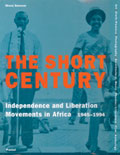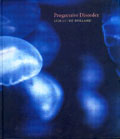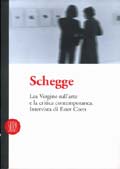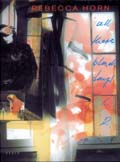|
|
|
The Short Century
A comprehensive publication printed to accompany the itinerant exhibition bearing the same name and curated by Okwui Enwezor. The works focus on an analysis on the past decades in Africa since 1945, characterized by the movement for independence and liberation, up until the apartheid era. A short century, indeed, as the title states. The book amasses these illustrative depositions which span diverse fields from theater to the visual arts, from photography to literature, from architecture to cinema and music, and reproduces the works of about fifty artists, from the 1950’s paintings by Mancoba and Sekoto, up to more contemporary projects by William Kentridge and video installations by Kay Hassan and Oladélé A. Bamgboyé. The appendix offers a vast anthology of historical documentation, such as political speeches and pamphlets, which act as candid historical accounts of these significant years. Critical texts in English are written by, among others, Wolfgang Bender, John Conteh-Morgan, Okwui Enwezor, Marylin Martin, Mark Nash, and John Picton.
The Short Century. Independence and Liberation. Movements in Africa 1945-1994, Prestel Verlag (Mandlstrasse 26, Munich, www.prestel.de), 2001, 496 pages, 24 x 31 cm.
|

|
Progressive Disorder. Christine Borland
This volume is an extensive and accurate record of Christine Borland’s solo show at Dundee Contemporary Arts. The five different projects represented were developed by the Scottish artist during time spent with genetic engineers, clinical psychologists, and biochemists at the universities in Glasgow and Dundee. The works, constructed from materials utilized in DNA research labs, address issues of morality, mortality, and related problems that science has as yet been unable to justify rationally and art has been at a loss to represent. Critical essays are written by Katrina M. Brown and Jonathan Jones. Texts in English.
Progressive Disorder. Christine Borland, Book Works (19 Holywell Row, London) 2001, 72 pages, 22 x 25,5 cm.
|

|
Isaac Julien
This book—part of the “Minigraph” series by the London-based publishing house ellipsis, under the editorial guidance of Kobena Mercer and Chris Darke—is dedicated to the artistic practice of Isaac Julien, one of the five finalists for the 2001 Turner Prize. His work distinguishes itself by its multidisciplinary use of media (cinema, dance, photography, music, theater, painting, and sculpture), which he manages to contain by superceding their borders on a formal level. The catalogue dwells on the themes that recur in Julien’s personal history, such as sexuality and race, and documents many of his famous works, including Territories (1984), Undressing Icons (1990-1991), The attendant (1993), Frantz fanon: black skin, white mask (1995-1996, with Mark Nash), The conservator’s dream (1996-1999), The long road to Mazatlán (1999), and Vagabondia (2000).
Isaac Julien, ellipsis (2 Rufus Street, London, www.ellipsis.com), 2001, 88 pages, 22 x 18 cm.
|

|
Schegge
This book of interviews was born out of a series of encounters between Ester Coen and Lea Vergine, the famous art critic. In 1974 Vergine came to public notice with her The Body as Art, which caused a huge scandal and was one of the first critical analyses of Body Art. In Schegge (Splinters), Vergine explains her interest in this movement: “I find the pathology very interesting. Also the transitory and ephemeral aspect of it.” The conversations took place in Milan and Caserta, and the initial idea behind the project was to narrate a kind of story describing Vergine’s exhibitions and philosophy. In the end, the format took on the aspect of a single, long dialogue. From the alternating questions and answers, thoughts and considerations, there emerges the intense experience of a life passionately lived and closely bound to art. The conversation comes to a close in a nearly cinematographic fashion: Vergine confesses that she knows nothing about the art market or the prices of artworks, and then she invites Coen to go for a walk, wishing to avoid having a stroke from immobility. Text in Italian.
Schegge. Lea Vergine sull’arte e la critica contemporanea. Intervista di Ester Coen, Skira Editore (Palazzo Casati Stampa, Via Torino 61, Milan), 2001, 55 pages, 15 x 21 cm.
|

|
Rebecca Horn
The only statement given by Rebecca Horn to explain her recent book All these black days–between is “Postcard collages and texts by Rebecca Horn sent to Timothy Baum and friends.” We don’t know anything about Timothy Baum, or who he might be. Maybe a friend of the German artist? Also unidentifiable are the other people to whom Horn sent postcards from Paris and Berlin, where she resides. The numerous postcards collected in this volume, on which the artist has intervened in paint and ink, become an emotional collage depicting her friendships and her emotions, as though her life and relationships were a continual voyage, requiring documentation and recollection. Texts in English.
Rebecca Horn, All these black days – between, Scalo Publishers (Weinbergstrasse 22a, Zurich, www.scalo.com), 2001, 160 pages, 18.5 x 24 cm.
|

|
|
|
|